Last updated on December 29, 2023
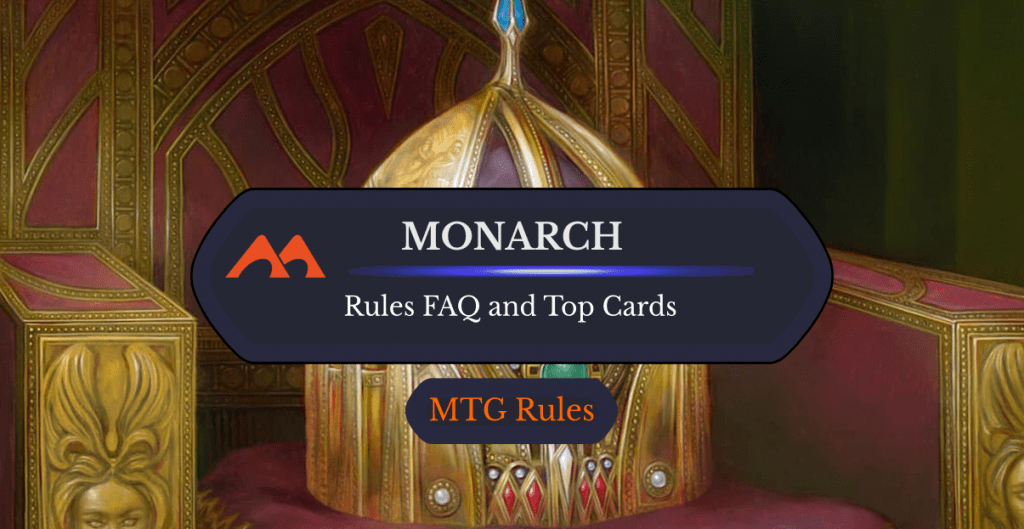
The Monarch | Illustration by Mike Bierek
I daresay that monarch isn’t one of Magic's most popular mechanics. It’s only been featured in two sets so far, and it’s not particularly strong at first glance. I really like it, especially as a theme for Commander decks. I think it creates an interesting starting point to build around.
Monarch is a mechanic that shines the brightest in multiplayer games, particularly for Commander. It’s a great way to give your game a more “political” dynamic. It creates incentives to build alliances and causes everyone to take action as soon as there’s a monarch on the table.
The ability in itself is good enough since it gives you card advantage, but the best part is its potential to alter the way a game develops. Players that use the monarch mechanic in their decks know this and build around it. Those decks are built for political play and usually bring interesting strategies to a match.
So what’s monarch all about? Let's dive into it.
All About Monarch: How Does It Work?
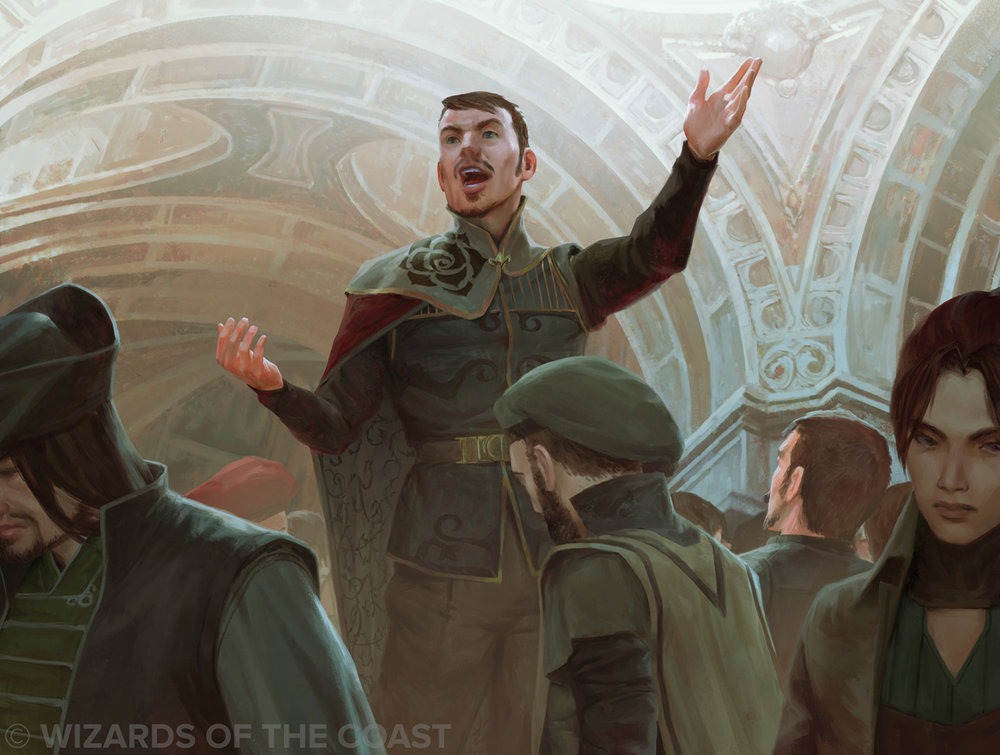
Garrulous Sycophant | Illustration by Lake Hurwitz
Monarch is what’s known as a player designation. To put it simply, that means that it’s as if you gained a “player type.” Once a player becomes the monarch, they gain a status that states: “At the beginning of your end step, draw a card. Whenever a creature deals combat damage to you, its controller becomes the monarch.” So as long as you’re the monarch, you’re gonna be drawing an extra card until you take combat damage.
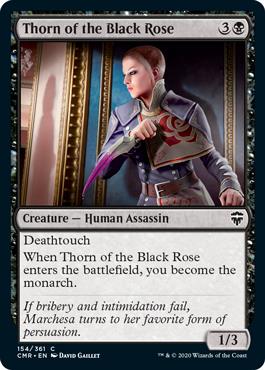
The only way to become the monarch, other than dealing damage to an existing monarch, is to play any of the cards that state “you become the monarch” like Thorn of the Black Rose or Crown-Hunter Hireling. If another player is the monarch and you play one of those cards, you become the monarch and they lose that status. This means there can only be one monarch at any given time in the game.
The game’s official rules state:
- 718.1. The monarch is a designation a player can have. There is no monarch in a game until an effect instructs a player to become the monarch.
- 718.2. There are two inherent triggered abilities associated with being the monarch. These triggered abilities have no source and are controlled by the player who was the monarch at the time the abilities triggered. This is an exception to rule 113.8. The full texts of these abilities are “At the beginning of the monarch’s end step, that player draws a card” and “Whenever a creature deals combat damage to the monarch, its controller becomes the monarch.”
There are several cards with abilities that trigger depending on who’s the monarch. Cards like Custodi Lich have effects that trigger whenever you become the monarch. There’s also Skyline Despot that need you to already be the monarch during your upkeep, or Queen Marchesa that gives you an advantage if you’re not the monarch by the time your turn starts. A combination of these three strategies makes monarch really interesting because losing the title doesn’t become a total disadvantage.
The History of Monarch
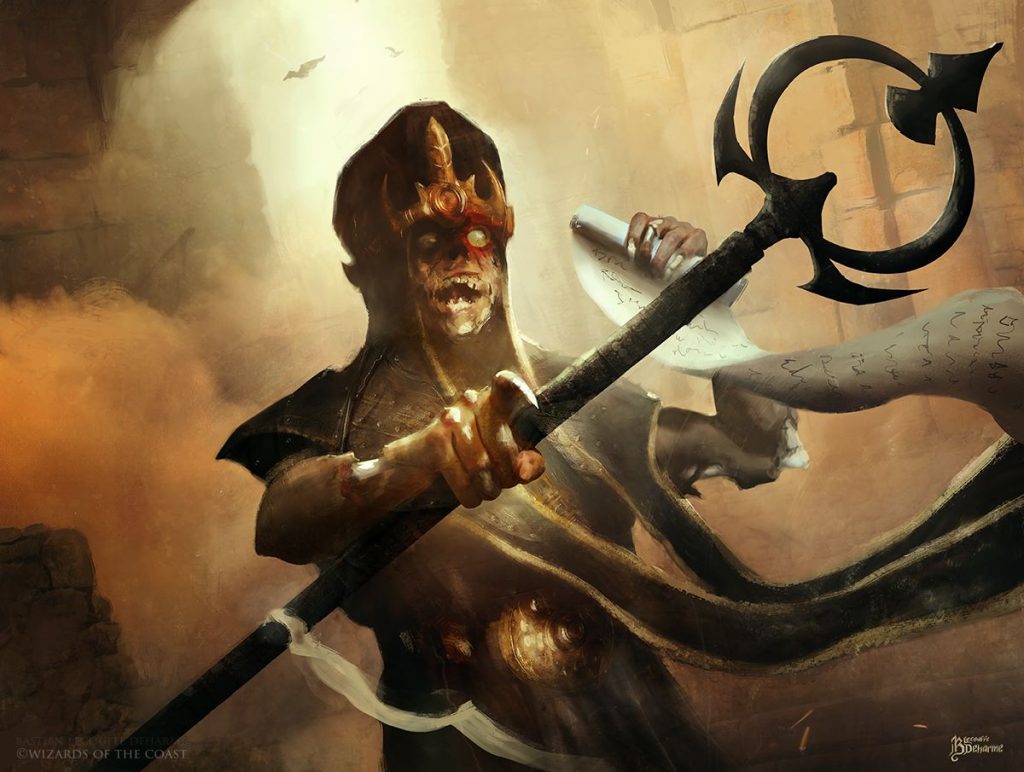
Custodi Lich | Illustration by Bastien L. Deharme
The history of this mechanic is a rather short and uneventful one. It first appeared in Conspiracy: Take The Crown. This was a set designed exclusively for draft and came out back in 2016. The set’s story follows Queen Marchesa rising to power after the assassination of Brago, King Eternal. The set logo is Marchesa’s personal seal, a black rose. At the time of the set’s release, the Queen was the only legendary creature with monarch-related abilities and she was very explicitly the focus of the story.
The second time this mechanic was printed was in Commander Legends in 2020. The set gave us our second legendary creature with monarch-related abilities, Jared Carthalion, True Heir. We also got a reprint of Queen Marchesa and several new cards that brought some good (and needed) support for the mechanic.
Since then several reprints have been sprinkled into Commander products such as the Universes Beyond Tales of Middle-earth Commander. In Commander Masters you found the first monarch-granting cards at non-rare since the original Conspiracy with 6 commons and 3 uncommons.
What Colors in the Color Pie Use Monarch?
All of the colors play this mechanic. Out of the 48 cards that have the keyword, green is the least represented and it makes sense being the color that cares the most about the natural order.
How Do You Become the Monarch?
There are three ways to become the monarch:
- Play a card that states that “you become the monarch.”
- One of your creatures deals combat damage to the current monarch.
- The current monarch leaves the game. In this case, the player whose turn it is becomes the monarch. If the monarch leaves the game during their own turn, then the next player in the turn order becomes the monarch.
Can Two Players Simultaneously Be the Monarch?
No. Whoever becomes the monarch becomes the only monarch. If another player was the monarch when a card like Staunch Throneguard entered the battlefield under your control, they would get their crown taken away and you become the one and only monarch.
Does Monarch Draw Happen Before Discard?
Yes, the monarch card draw happens at the beginning of the end step, before the cleanup step in which a player must discard down to their maximum hand size.
How Does Monarch Work in Two-Headed Giant?
This one has two parts. The first one is that only one player can be the monarch during a Two-Headed Giant match. So if a player in a team is the monarch, they’re the only one who gets to draw a card at the end of their end step. Their partner doesn’t.
And what if the two opposing players deal damage to the monarch at the same time? If two players deal simultaneous damage to the monarch, then the ability triggers twice and goes on the stack. Since the monarch that’s receiving the damage is the one who controls the ability, they choose the order in which they go into the stack. One of them will resolve first, making an opponent the monarch for a brief moment until the other ability resolves and makes their partner the monarch. To make it simpler, the monarch chooses who gets the status after they’re dealt damage.
What if the Monarch Just Dies in Multiplayer?
If the monarch dies or is eliminated during another player’s turn, then that player becomes the new monarch. If the monarch dies during their own turn, then the player who’s next in turn order immediately becomes the monarch.
How Does Monarch Work in 1v1 Magic?
The mechanic itself works the same. What would make a difference here is the strategy that you might want to play. Being the monarch is an invitation for your opponents to attack you. If you only have one opponent, any chance at political gameplay gets thrown out the window immediately since they only have one target to start with: you.
The Top Monarch Cards
I’m going to be honest with you here. There are 48 monarch cards. None of them are exactly game-breakers since this is an ability that affects you as a player and needs a more complex build to work.
That being said, there are still quite a few cards that are just plain good.
Queen Marchesa
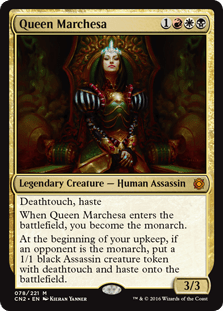
I have to admit to a certain degree of bias towards this card since it was the inspiration for one of my favorite EDH decks. Queen Marchesa is a great intro to cards that use the monarch mechanic to their advantage.
You can stay safe in the knowledge that you’ll always have either card advantage or extra creatures with haste and deathtouch to compensate. The Queen fits perfectly in token-centric deck strategies.
Jared Carthalion, True Heir
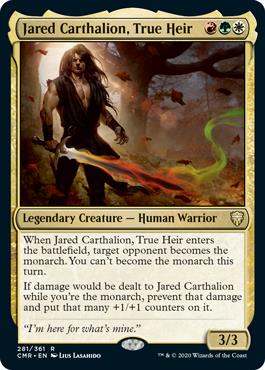
Our next monarch commander is more aggressive. This card focuses on a more Voltron-style strategy. As long as you’re the monarch, Jared Carthalion, True Heir will keep getting stronger and stronger.
If you mix that with equipment and enchantments like Swiftfoot Boots or Pariah, this card will grow insanely big in no time. The only downside is that your opponent gets to be monarch first, but it’s a small price to pay for how big the True Heir can get.
Custodi Lich
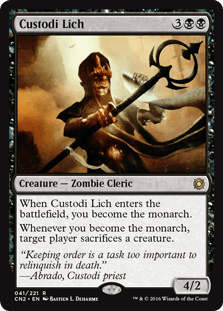
If you’re the monarch, you’re bound to become a target for your opponents’ attacks. That means you’ll lose your status a lot if you can’t defend yourself. But you also probably have ways to regain it, and that’s where Custodi Lich shines the brightest.
Every time you become the monarch, an opponent is forced to sacrifice a creature. That’s a repeatable non-targeted removal effect that rewards you for taking back the crown. You can even take out creatures with hexproof or indestructible if you play it right. With this card in play, you either start forcing your opponents to sacrifice almost every turn or they stop attacking you.
The Courts
Monarch is a mechanic that doesn’t win a game on its own. It gives card advantage and makes some of your cards better or more useful, but that’s about all it does. And that’s what the courts paint perfectly.
The courts become absurdly powerful when you’re the monarch, but the truth is that they’re just plain good on their own. That’s what a monarch themed deck should be: it should work and be powerful when you don’t have the title and take advantage of it when you do.
Regal Behemoth
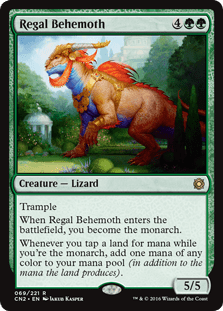
This is a simple one. Doubling your mana pool is always one of the strongest things you can do in a game. Card and mana advantage at the same time can put you way ahead of your opponents really fast. Regal Behemoth does exactly that. And it’s a large creature with trample, so that’s a plus.
Champions of Minas Tirith
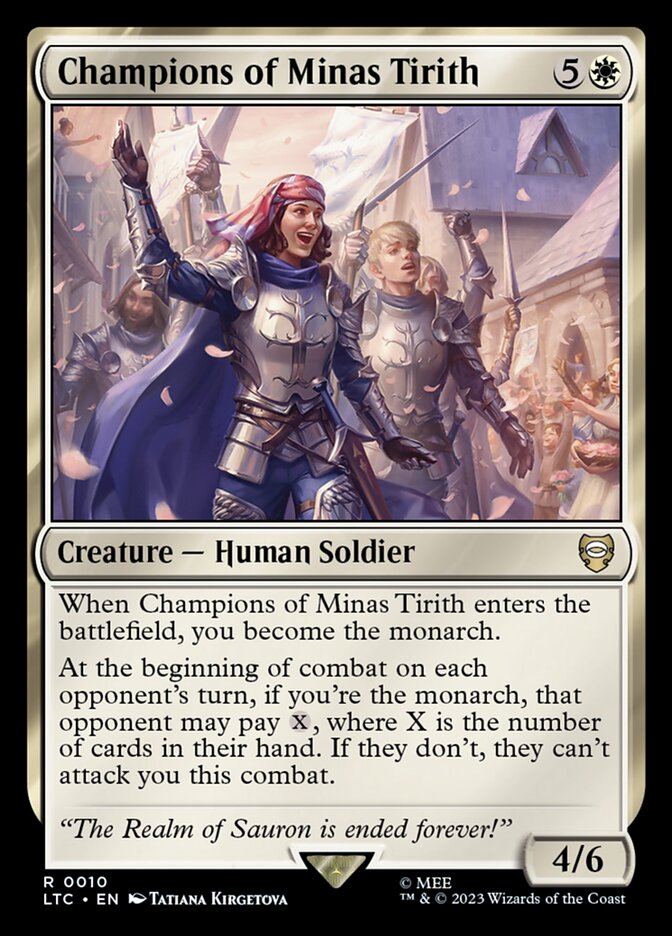
The Champions of Minas Tirith are excellent at pointing would-be attackers somewhere else. Much like Ghostly Prison makes it costly to attack me and creates more interactions between opponents.
Crown of Gondor
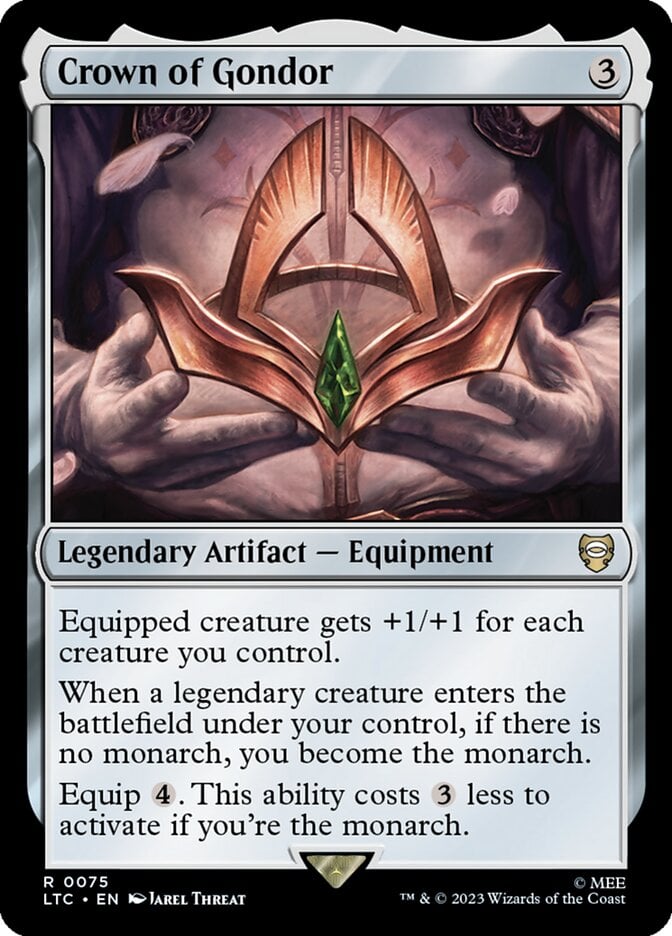
Any legendary creature can take up the Crown of Gondor and turn you into the monarch. The main thing missing here is evasion to help ensure the crowned creature gets damage through and that you keep the monarch designation. This card is such a flavor win, it makes me want my licorice movie snacks.
Fealty to the Realm
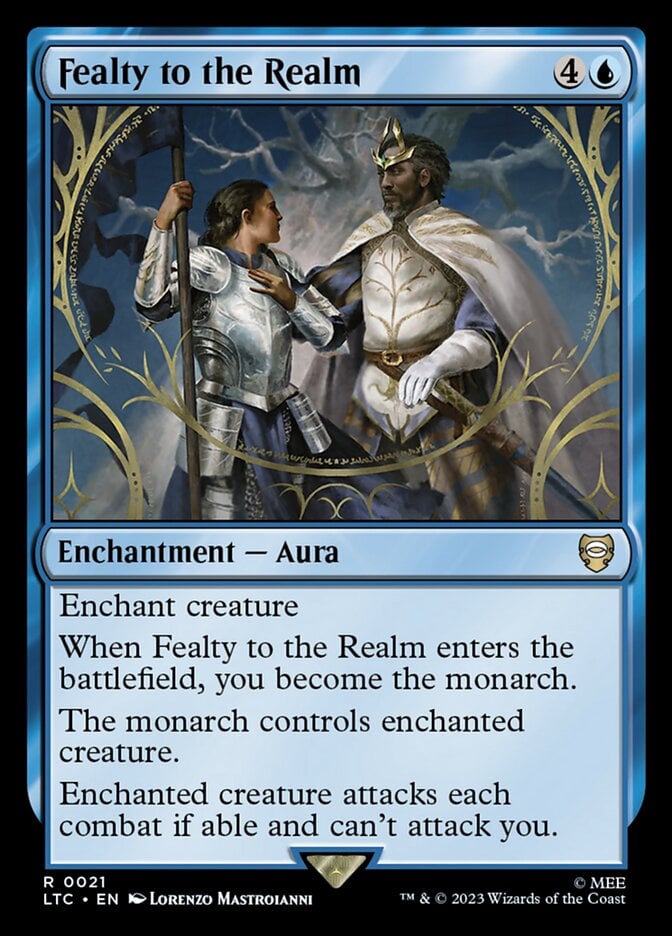
Control magic has long been one of the most provoking actions you can take against an opponent. And this is even easier to cast than Mind Control. One of the coolest aspects of being the controller of Fealty to the Realm is that even if you lose the monarch designation, the enchanted creature must attack others. Turn your opponent's strongest attacker against another player? Yes please!
Honorable Mentions
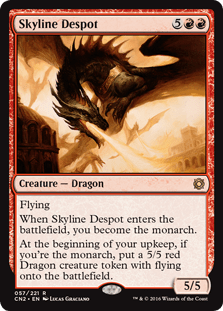
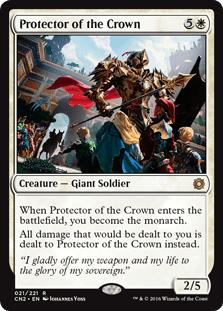
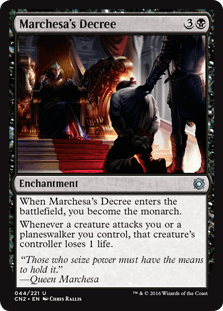
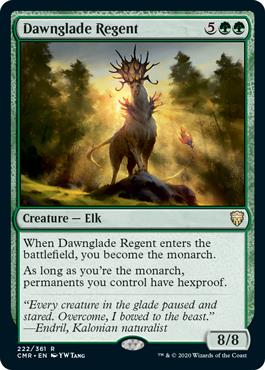
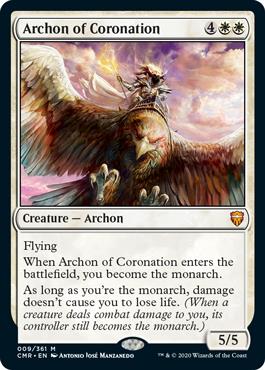
Combos With Monarch: Sample Deck
I’ve said before that monarch is a mechanic that doesn’t win games by itself. It’s usually not much more than a convenient advantage. So how do you win games with a monarch themed deck?
I said it when talking about Queen Marchesa and Jared Carthalion, True Heir: you need to combine monarch with other strategies for it to work at its best. I’m gonna use the strategy of a deck I built as an example. I also have to mention that I haven’t updated this deck in more than two years, so several cards from Commander Legends and other sets that could’ve been useful weren’t included.
Commander (1)
Creature (15)
Academy Rector
Darien, King of Kjeldor
Dread
Gisela, Blade of Goldnight
Kambal, Consul of Allocation
Kazuul, Tyrant of the Cliffs
Master of Cruelties
Royal Assassin
Selfless Squire
Sheoldred, Whispering One
Skyline Despot
Suspicious Bookcase
Teysa, Envoy of Ghosts
Vampire Hexmage
Xantcha, Sleeper Agent
Instant (17)
Anguished Unmaking
Batwing Brume
Boros Charm
Comeuppance
Dawn Charm
Deflecting Palm
Enlightened Tutor
Hide // Seek
Mana Tithe
Path to Exile
Rakdos Charm
Reverberate
Swords to Plowshares
Teferi's Protection
Utter End
Vampiric Tutor
Wear // Tear
Sorcery (8)
Choice of Damnations
Debt to the Deathless
Demonic Tutor
Fumigate
Martial Coup
Mastermind's Acquisition
Merciless Eviction
Phyrexian Rebirth
Enchantment (13)
Assemble the Legion
Authority of the Consuls
Blind Obedience
Delaying Shield
Ghostly Prison
Land Tax
Marchesa's Decree
No Mercy
Phyrexian Unlife
Price of Knowledge
Solemnity
Stolen Strategy
Underworld Connections
Artifact (11)
Boros Signet
Chromatic Lantern
Commander's Sphere
Elbrus, the Binding Blade
Forcefield
Mirage Mirror
Orzhov Signet
Rakdos Signet
Sol Ring
Sunforger
Thaumatic Compass
Land (35)
Arid Mesa
Blood Crypt
Bloodstained Mire
Clifftop Retreat
Command Tower
Dragonskull Summit
Exotic Orchard
Fetid Heath
Godless Shrine
Graven Cairns
Isolated Chapel
Luxury Suite
Marsh Flats
Maze of Ith
Mountain x3
Nomad Outpost
Path of Ancestry
Plains x3
Reliquary Tower
Rogue's Passage
Rugged Prairie
Sacred Foundry
Scavenger Grounds
Shinka, the Bloodsoaked Keep
Swamp x3
Temple of Malice
Temple of Silence
Temple of Triumph
Temple of the False God
The deck plays Queen Marchesa as its commander and uses a pseudo-pillow fort game style. The idea is to play politically and avoid taking damage as much as possible.
The main strategy of a deck like this is to try and keep opponents from attacking you while also creating tokens you can use to overrun your opponents. Monarch plays a part of this strategy as a way to gain card advantage, create tokens through different cards, and force political gameplay.
Creature Combos
There are five creatures in this deck that are arguably the most important:
Three of these are there to protect you when you become the monarch and the other two take advantage of it. Since being the monarch gives your opponents a great reason to attack you, you need to give them even better reasons not to.
Let’s use Kazuul, Tyrant of the Cliffs as an example. The Tyrant forces your opponents to pay three extra mana for every creature attacking you. If they don’t, you create a 3/3 token. Attacking you means you’ll have as many creatures to hit them back with, if not more. Unless they waste absurd amounts of mana. Both options create a huge disadvantage for your opponents.
Both Teysa, Envoy of Ghosts and Darien, King of Kjeldor work in similar ways. Dread approaches the issue from a different angle but still manages to keep your opponents at bay.
Skyline Despot shines when opponents don’t attack and you remain the monarch. Creating a 5/5 dragon with flying each upkeep as long as you’re the monarch can create a massive power imbalance.
Enchantment Combos
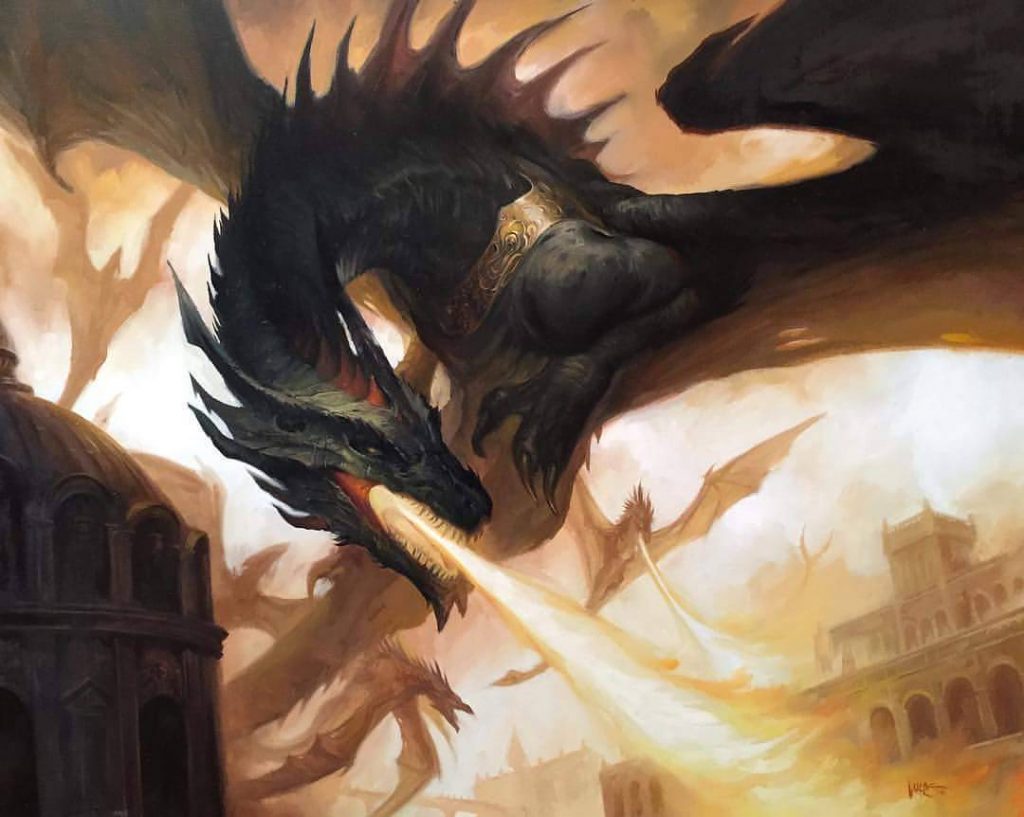
Skyline Despot | Illustration by Lucas Graciano
Ghostly Prison and No Mercy serve the same purpose as the creatures I mentioned. Attacking you will become so taxing on your opponents that they’ll have to strongly consider it. You can use Price of Knowledge to punish your opponents for having the monarch status. They get card advantage, but it slowly drains their life points.
Delaying Solemnity
I also use a combo that might get you kicked out of the table if you use it too much. Delaying Shield and Solemnity. This combo has two purposes.
If your opponents can’t remove one of the pieces, then you’ve become virtually unbeatable. The combo also forces a choice. This deck plays plenty of enchantments. Your opponents might be forced to choose between preventing this combo or destroying Assemble the Legion. Not to mention that Delaying Shield prevents you from losing monarch since you don’t really receive combat damage.
This deck uses politics in a lot of ways. You force your opponents to choose between difficult options that almost always benefit you. The monarch mechanic becomes an excuse to force those options. It’s a way to trigger political gameplay and interesting interactions at best, and simple card advantage at worst.
Long Live the Monarch
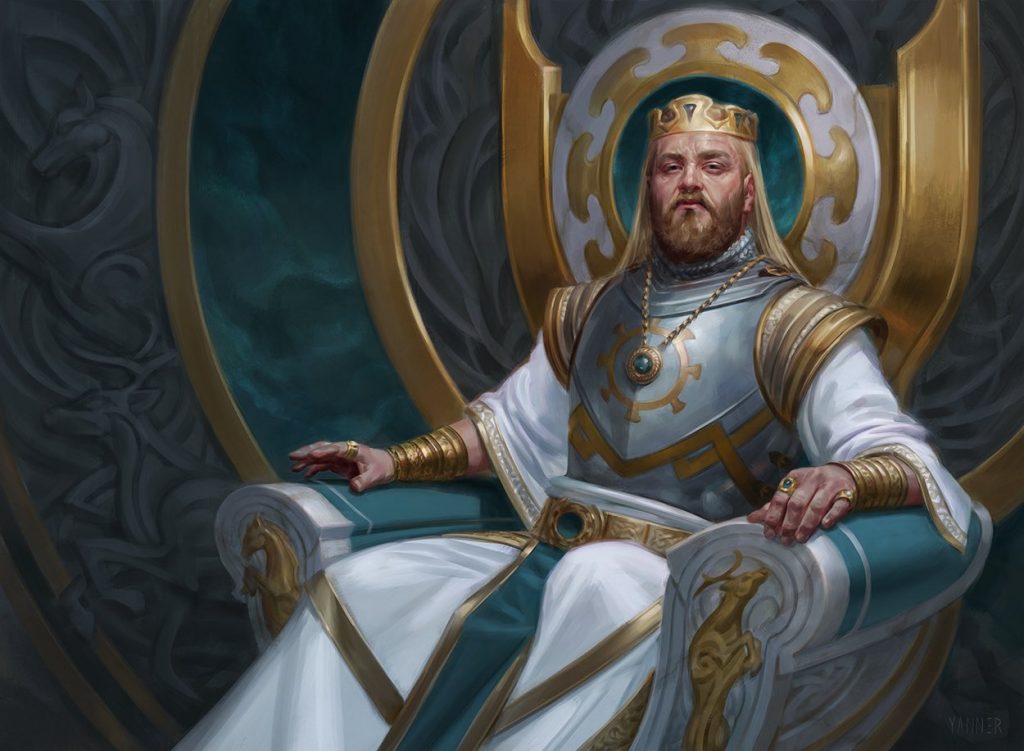
Kenrith, the Returned King | Illustration by Kieran Yanner
I’m a big fan of mechanics like monarch. I think a strong political factor can make an EDH game much more interesting and fun. Especially if you’re at a table with four or five players. Everyone can play a lot of creatures and win through sheer strength, but decks built around mechanics like monarch usually find ways to subvert that.
Monarch doesn’t do very well on its own, but it becomes much more interesting if you pair it up with another theme or strategy. I hope we see more support for it in the future. I’d love to see cards that make it a standalone strategy for Commander decks.
I have to admit that I was really happy to get support for monarch in Wilds of Eldraine Commander. I appreciate the the new cycle of courts and the themes of royalty and actual monarchic characters.
But I’ve talked enough. What do you think about monarch? Do you want to see more support for it in the future, or do you think there’s not much that can be done with it? Feel free to leave a comment below or chuck it in our Discord!
While we wait for our opponents to decide who to attack, why not play some games in MTGA? Be sure to check Arena Tutor to give you a hand with that. And don’t forget to follow our Twitter so you don’t miss out on new articles and news.
That’s all from me for now. Have a good one, stay safe, and may the shuffler be always in your favor!
Follow Draftsim for awesome articles and set updates: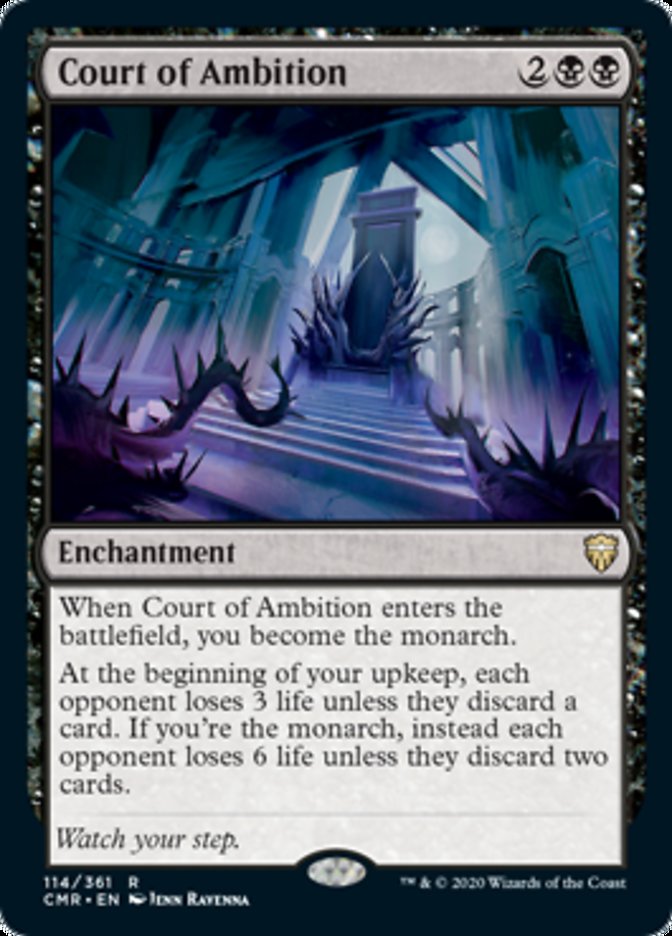
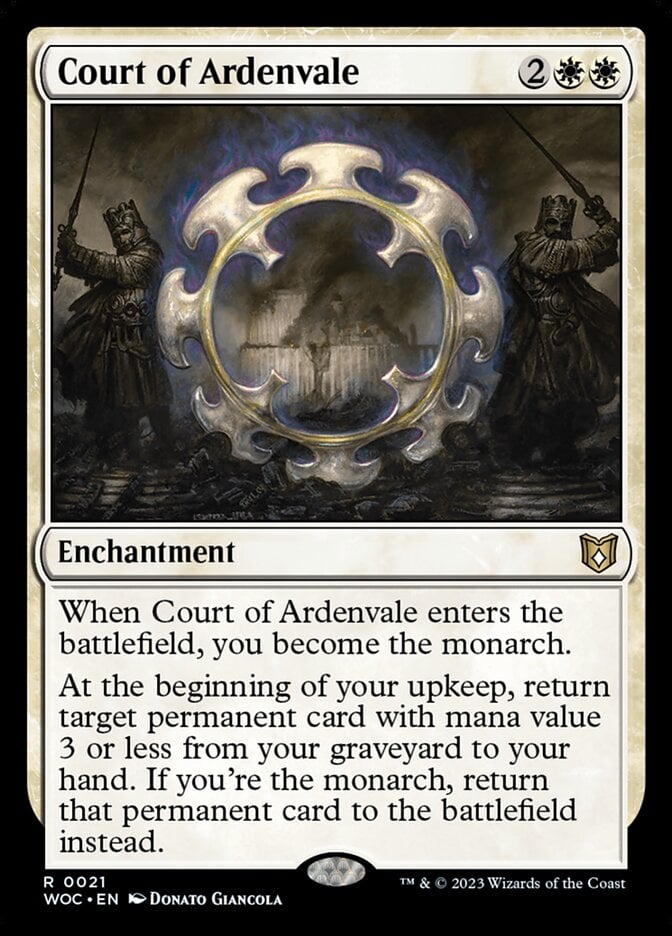
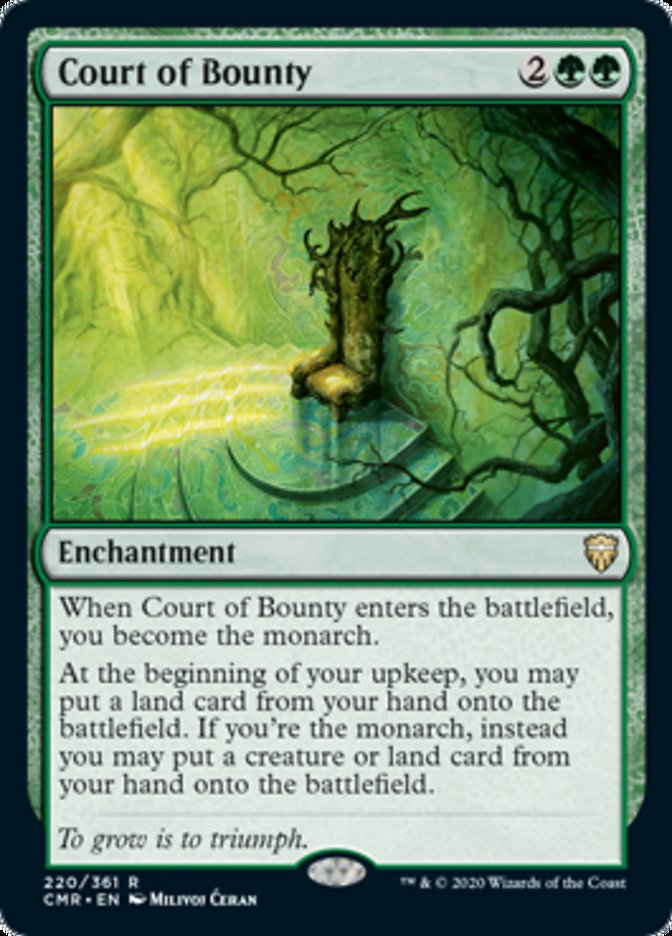
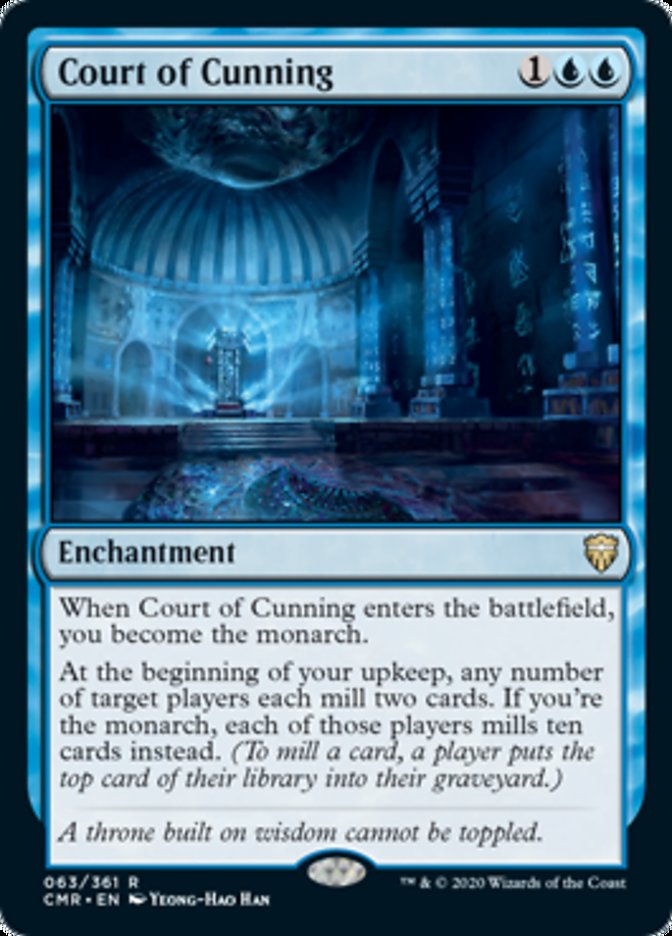
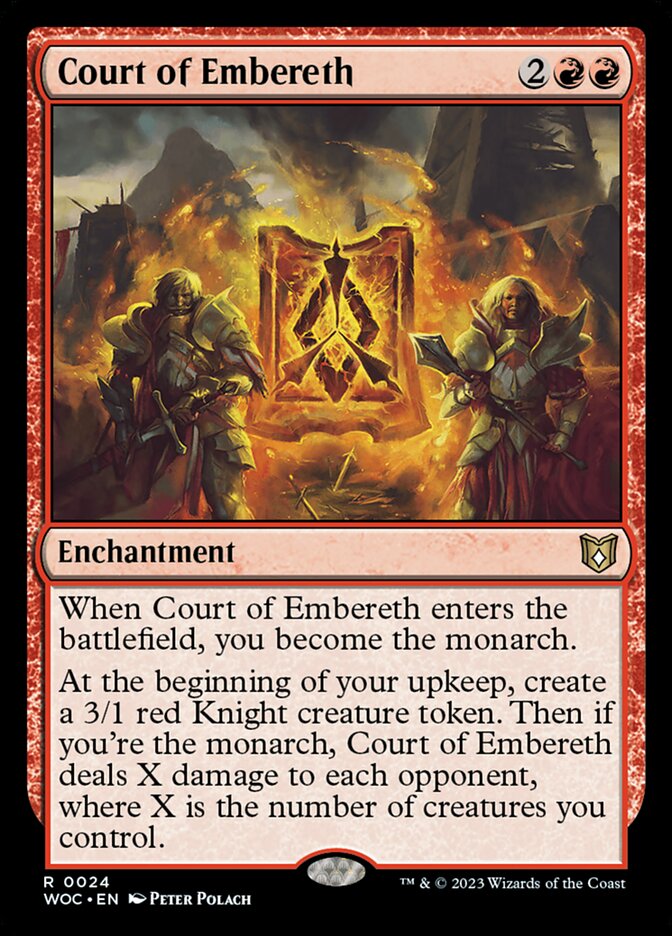
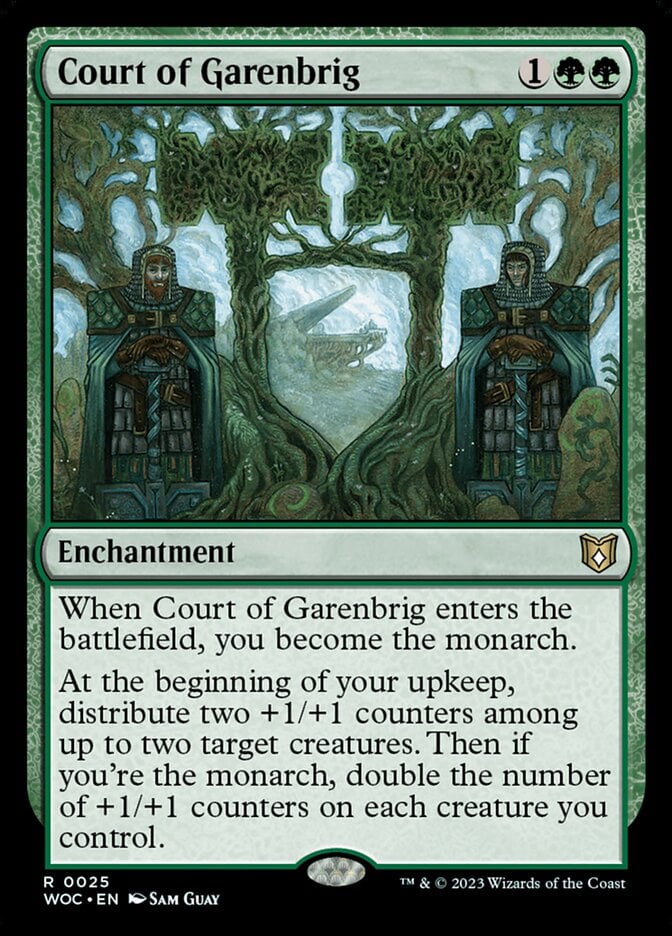
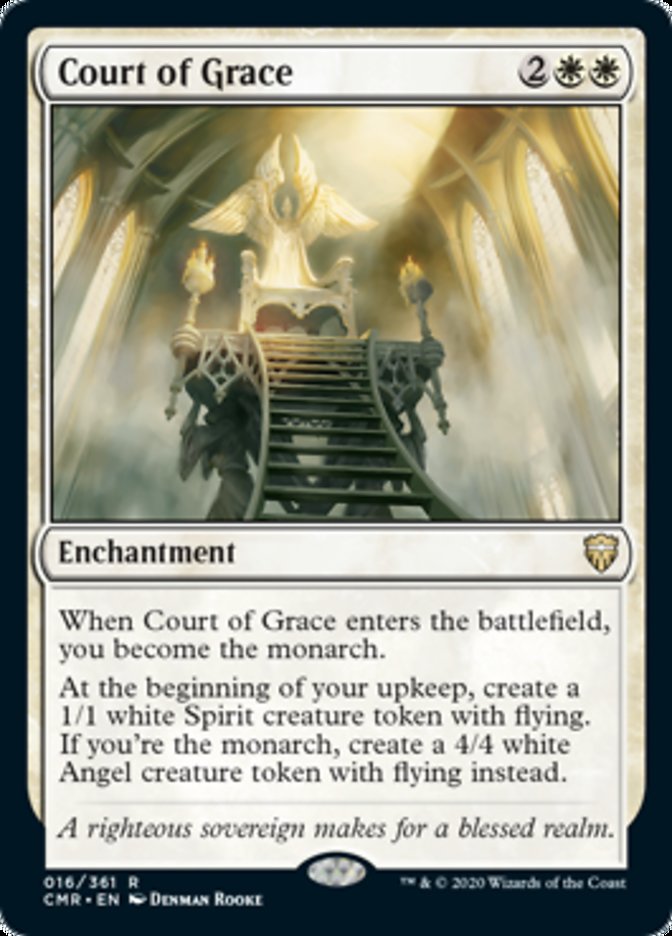

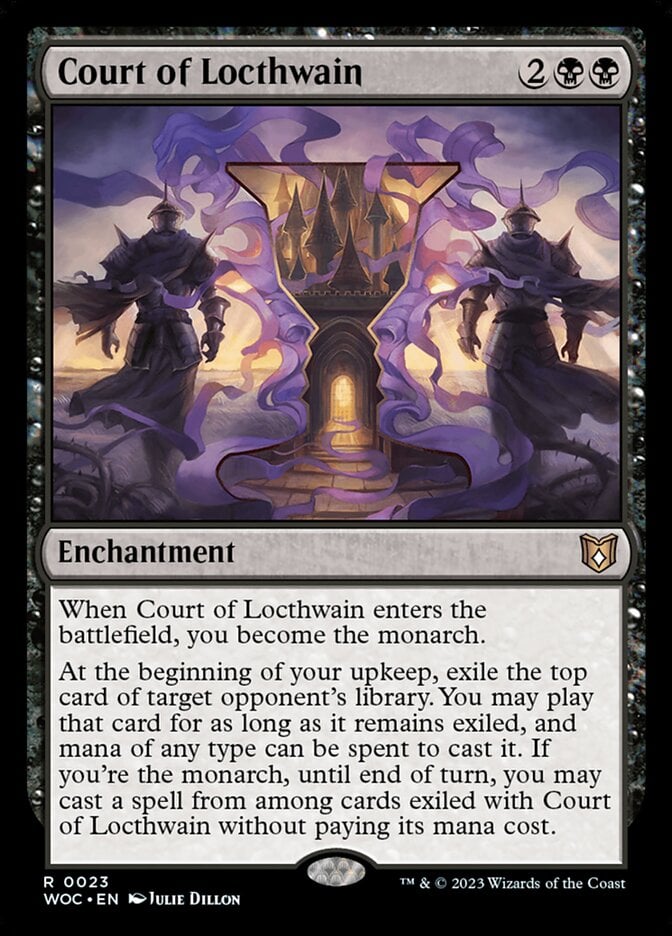
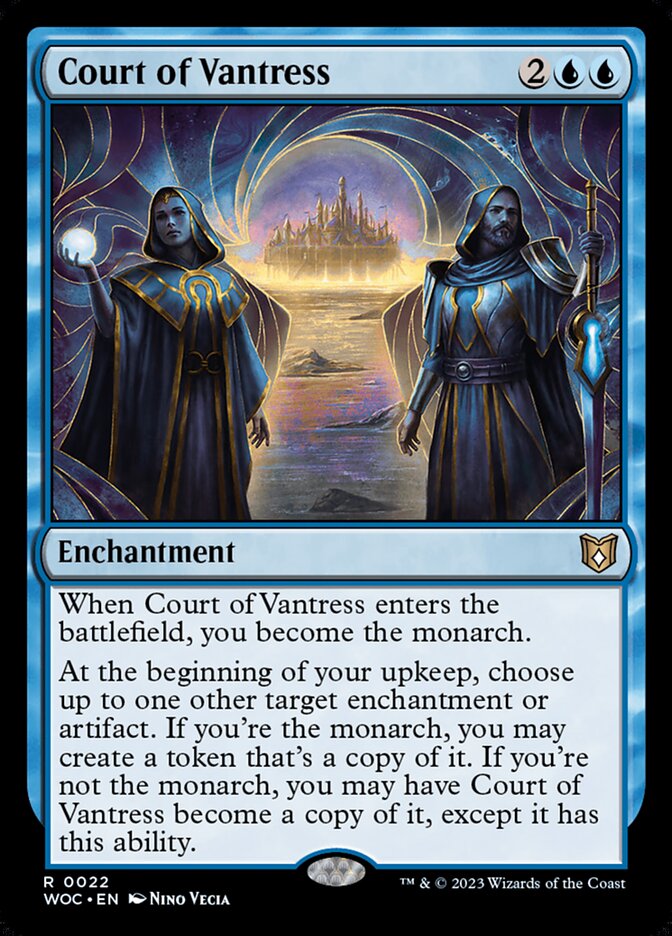
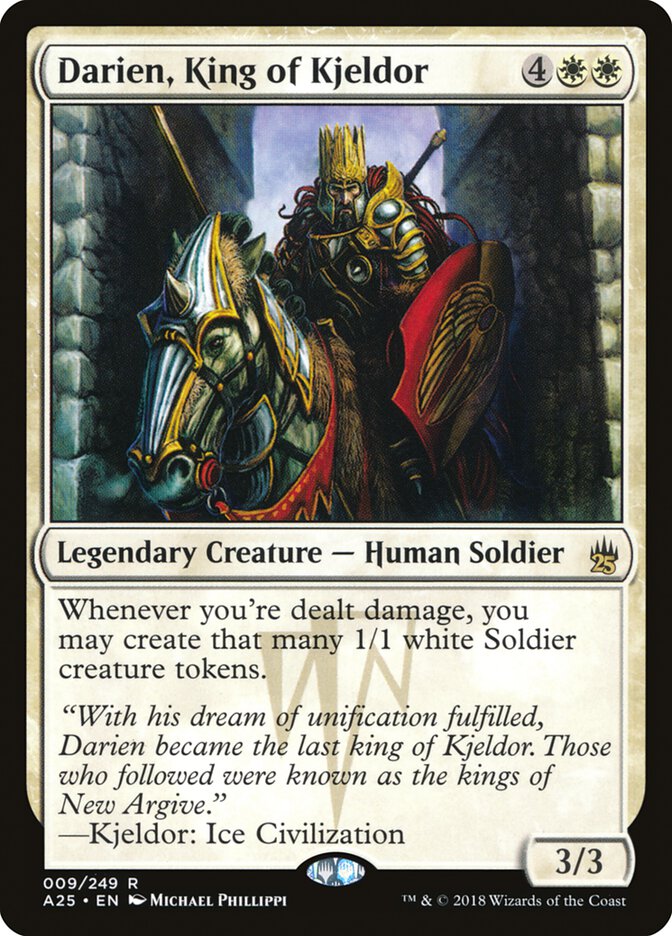
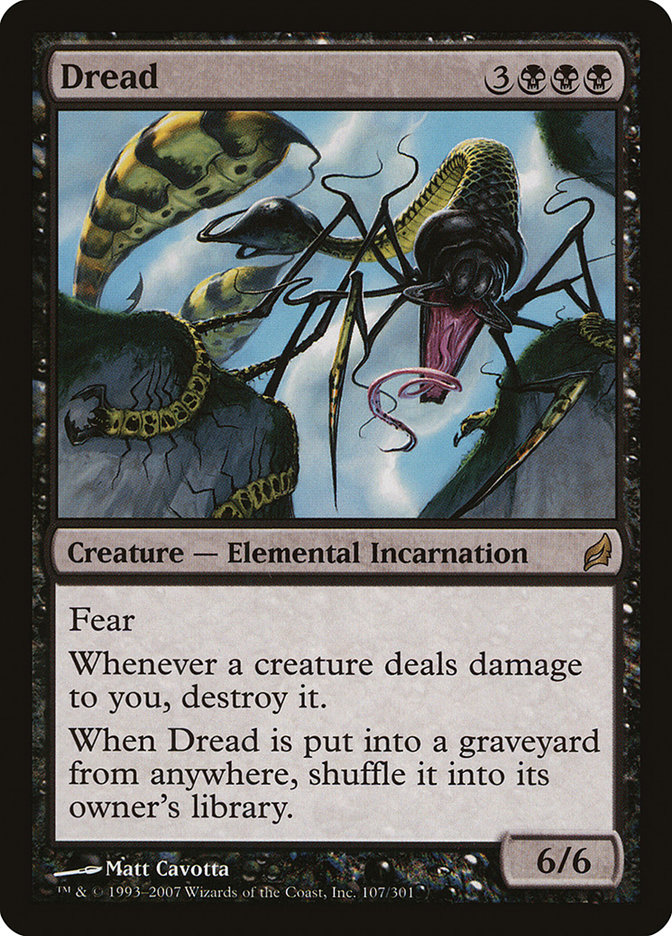
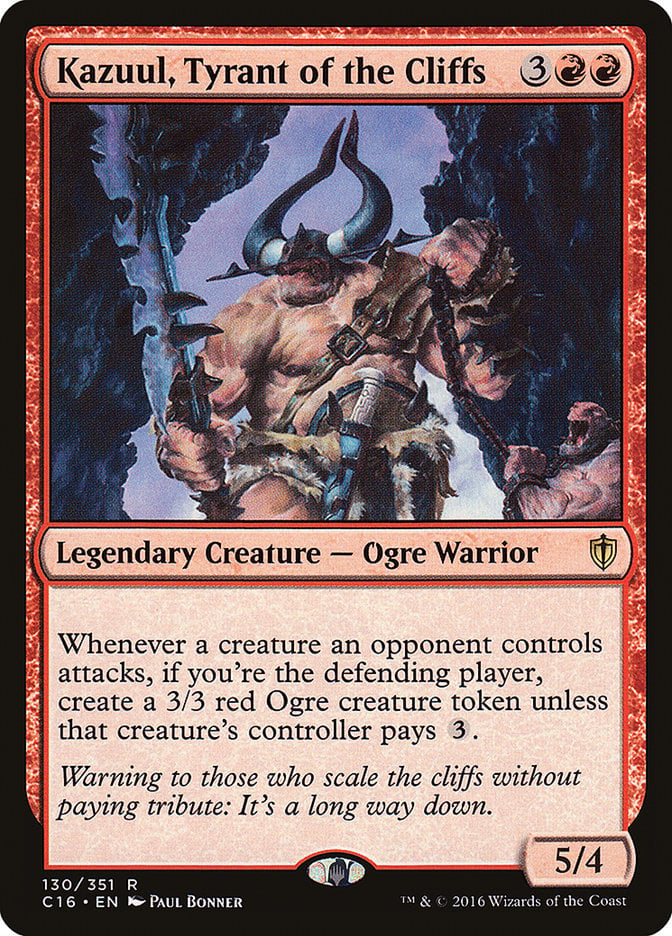
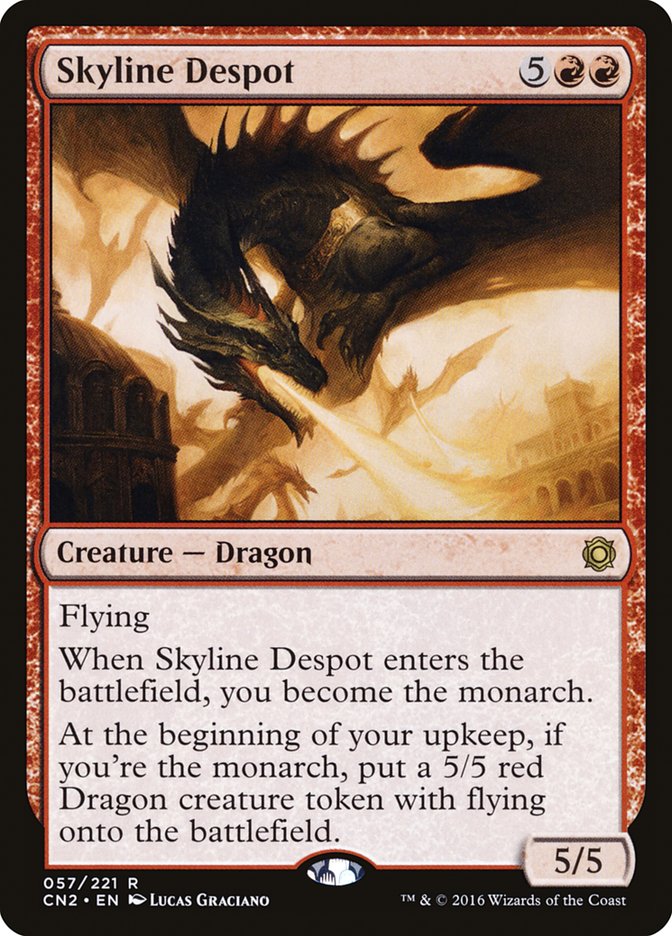
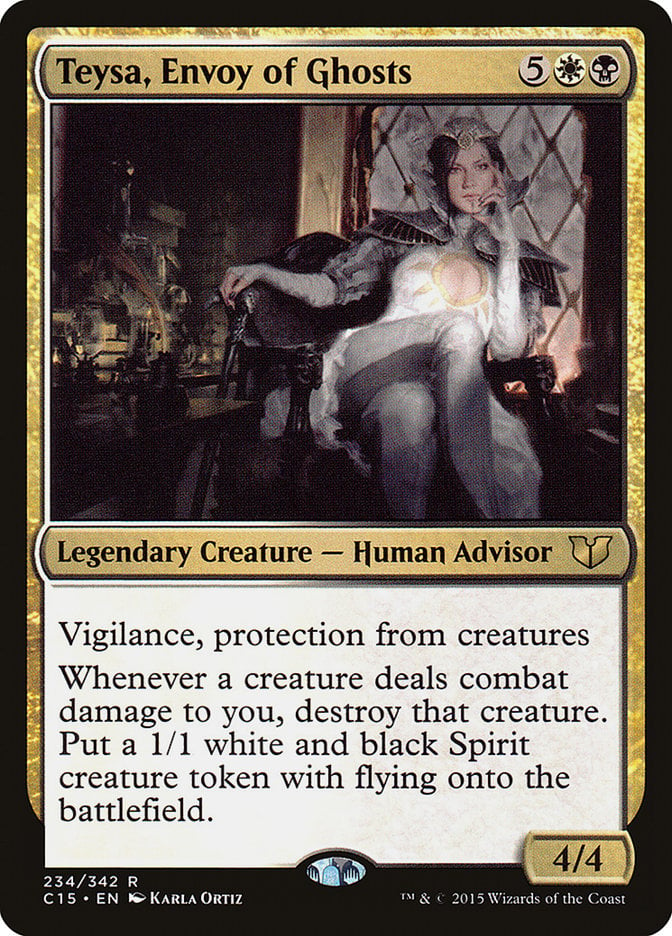
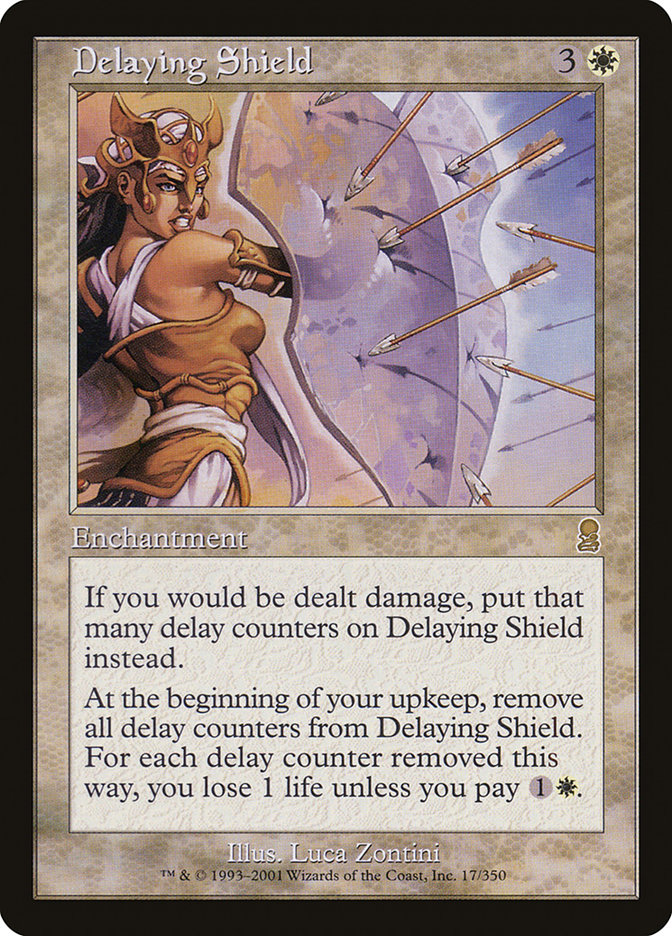
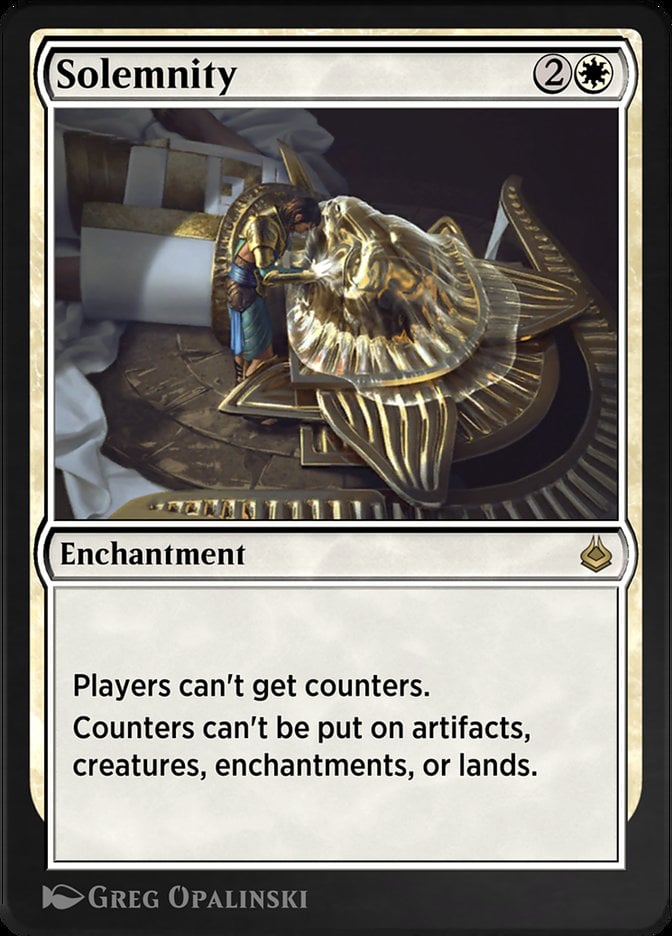

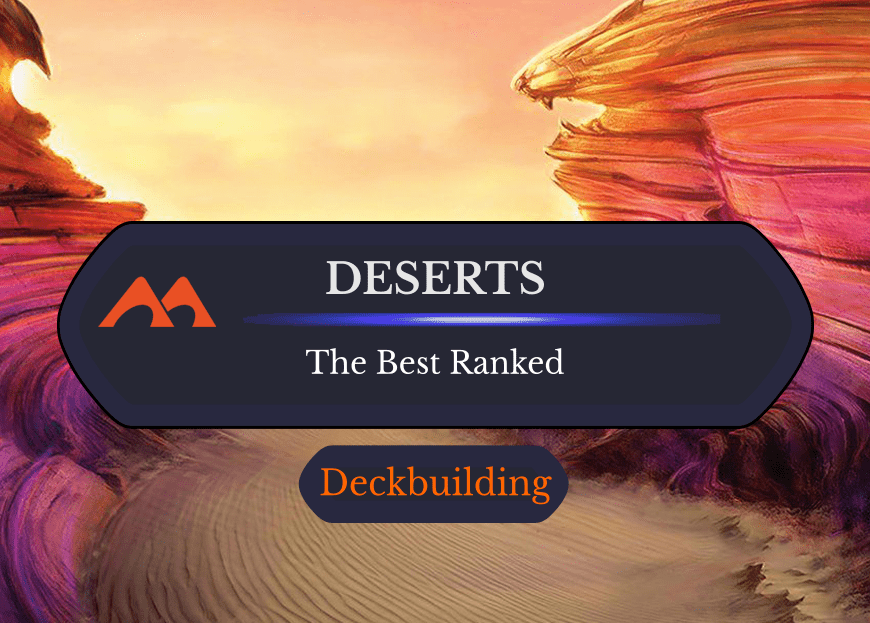
Add Comment